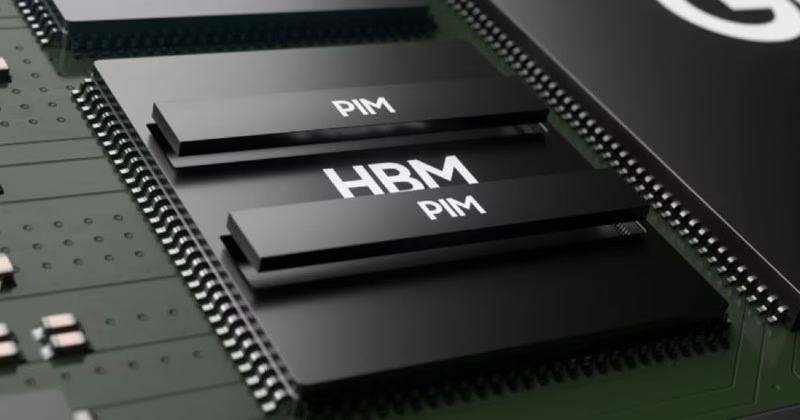Huawei's High-Bandwidth Memory Leap: A Game Changer for Smartphones?
It seems like just yesterday we were marveling at the sheer speed of LPDDR5X RAM in our flagship phones, pushing the boundaries of mobile performance. But if recent whispers from Weibo and reports across tech outlets like Gizchina and TweakTown are to be believed, Huawei is about to pull a rabbit out of the hat, potentially becoming the first smartphone vendor to integrate High-Bandwidth Memory (HBM) technology into its devices. Now, that's a statement, isn't it? This isn't just an incremental upgrade; it's a fundamental shift, and it could seriously shake up the mobile hardware landscape.
Understanding High-Bandwidth Memory (HBM)
So, what exactly is HBM, and why should you care? Think of your phone's memory as a highway. Traditional LPDDR (Low-Power Double Data Rate) memory, while fast, is like a multi-lane highway where data travels in a relatively flat, wide path. HBM, on the other hand, is a completely different beast. It's a type of 3D-stacked synchronous dynamic random-access memory (SDRAM). Instead of spreading out, memory dies are stacked vertically, connected by through-silicon vias (TSVs). This vertical stacking allows for incredibly wide data paths – hundreds or even thousands of bits wide – compared to the 64-bit or 128-bit paths of LPDDR.
What does this mean in practical terms? Imagine that highway again. With HBM, you're not just adding more lanes; you're building a super-expressway with multiple levels, allowing a colossal amount of data to flow simultaneously. This translates directly into significantly higher bandwidth and lower power consumption per bit transferred. For a smartphone, where every milliwatt counts and data processing is king, that's a huge deal.
Huawei's Strategic Move: A First-Mover Advantage
Why now? Well, the mobile industry is rapidly evolving, with on-device AI becoming increasingly critical. From real-time language translation to advanced computational photography and even running local large language models, these tasks demand immense memory bandwidth. LPDDR5X is good, but HBM is in a different league entirely when it comes to feeding data to powerful neural processing units (NPUs) and GPUs. It's like trying to fill a bathtub with a garden hose versus a fire hose. HBM is the fire hose.
The AI Performance Boost: Where HBM Shines
With HBM, Huawei's devices could see a dramatic improvement in how quickly and efficiently they handle AI tasks. This isn't just about faster image processing; it's about enabling entirely new capabilities. Think about:
- More sophisticated on-device AI models: Running larger, more complex AI models directly on the phone without relying on cloud processing. This means better privacy, lower latency, and offline functionality.
- Enhanced gaming and graphics: While not the primary focus, the increased bandwidth could also benefit high-fidelity mobile gaming, allowing for more complex scenes and faster texture loading.
- Real-time content creation: Imagine editing 8K video or rendering complex 3D models directly on your phone with desktop-like fluidity. HBM could make that a much smoother experience.
It's a step towards making our phones truly intelligent companions, not just smart devices.
Industry Implications and the Competitive Race
If Huawei indeed pulls this off, it's going to send ripples through the entire smartphone industry. Competitors, especially the big players like Apple and Samsung, will be watching very, very closely. Apple, with its highly integrated chip design, already boasts impressive on-device AI capabilities, but HBM could give Huawei a significant edge in raw memory throughput.
Will others follow suit? Absolutely. Once one major player demonstrates a clear performance advantage, the race is on. We've seen this pattern before: high refresh rate screens, fast charging, advanced camera sensors. The challenge for other manufacturers will be integrating HBM into their existing chip architectures and supply chains, which isn't a trivial task. It requires significant engineering prowess and potentially new manufacturing processes.
There are also cost implications. HBM is, by nature, more complex and expensive to produce than traditional LPDDR. So, we might initially see this technology reserved for ultra-premium flagship devices. But as with all new tech, costs tend to come down over time.
The Road Ahead: Challenges and Opportunities
While the prospect of HBM in smartphones is exciting, it's not without its challenges. The 3D stacking process is intricate, demanding high precision in manufacturing. Thermal management also becomes a consideration, as packing more components into a smaller space can generate heat, although HBM's power efficiency helps mitigate this somewhat.
Despite these hurdles, the potential upsides are immense. For Huawei, it's a chance to reassert its technological leadership in the global market, particularly in the face of ongoing geopolitical pressures. For consumers, it promises a new era of mobile performance, especially for AI-driven applications that are becoming central to our digital lives.
We're on the cusp of something big here. Huawei's potential HBM adoption isn't just about faster phones; it's about fundamentally rethinking what a smartphone can do. And frankly, I can't wait to see it in action.
